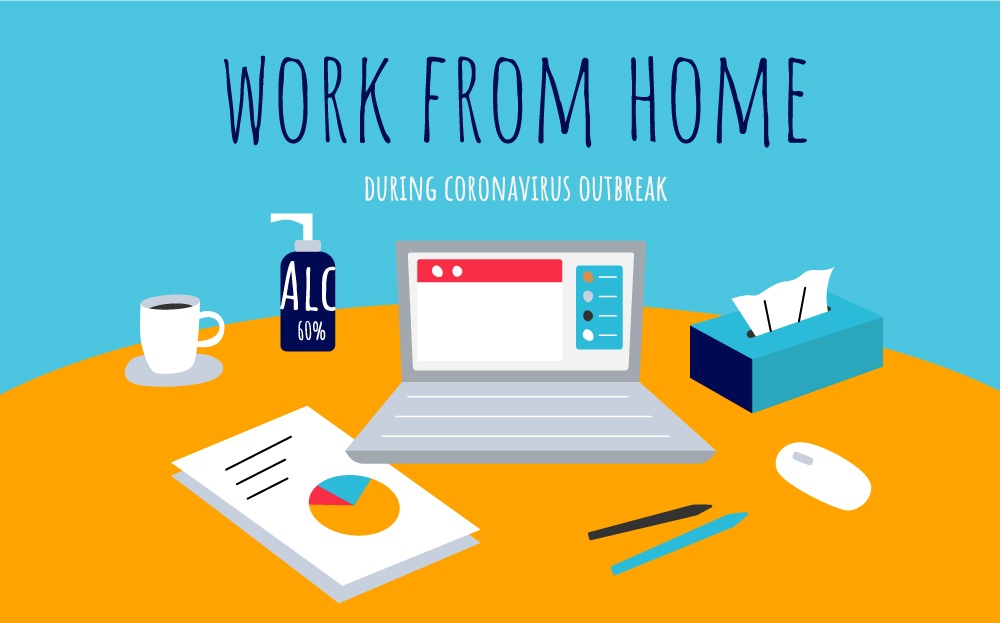Co-authored by: Ameera N. Teal MS, CSCS, EP
COVID-19 shelter-in-place orders have required many professionals to create an unconventional new home office. If you are among those now working a 9-5 in the living room, you might find this new setting the cause of everything from eye soreness to low back pain. Finding a space in your home to get meaningful work done can be an environmental and physical challenge. Optimizing the ergonomics of whatever work surfaces and spaces you have at home is important to avoid injuries. Below are a few ways to create an ideal makeshift workspace that reduces physical and mental strain.
Practice Good Posture
Attentiveness to your body position throughout the day is essential. Practicing good posture starts with creating a spine supportive workspace. Three key tips for good posture:
- Create limb support. When seated, rest arms at 90 degrees supported on the desk/ table. Keep knees at 90 degrees when seated. When standing keep knees soft without locking and favoring one leg, balance weight on both sides. Whether seated or standing, rest feet on a flat surface while wearing supportive shoes.Try house slippers with a good sole.
- Don’t Slouch. Keep head and neck in a neutral position with the top of your screen no higher than eye level. Keep shoulders back with a proud chest when sitting or standing.
- Use a chair with back support. Try rolling up a towel or blanket and placing it behind your lower back for additional support. For a cushioned seat, place a pillow on your seat for added comfort. Sitting on the couch sometimes is hard to avoid. Set a time limit of 30 minutes or less and use pain as a warning sign to get up.
Alternate Work Stations
Staying in any position for too long can lead to nagging aches and pains over time. Try to alternate between three work stations around the house. Alternating between a sitting desk, a standing desk, and the couch (for short periods) can keep you active and engaged throughout the day. However, it’s best not to do work while in bed. Lying or sitting in bed can cause neck, back and hip pain. Working in bed during the day can also interfere with restful and productive sleep at night.
Reduce Screen Time
If you can help it, print out some documents and give your eyes a break from the screen. Looking out of the window intermittently and taking an activity break are also ways to prevent eye strain. For times when staring at a screen for an extended period is unavoidable, such as virtual meetings, be sure to optimize the screen lighting to avoid glare and excessive blue lighting.
Stay Active
Staying physically active is even more important while working from home. Activities can be as simple as stretching at the start of the day, participating in a virtual exercise class, or even taking a short walk around the block. Short exercise breaks throughout the day can be even better than long workouts to prevent joint stiffness, posture fatigue, and eye strain. Taking three 10-minute activity breaks every day throughout the workweek is also a great way to meet the American Heart Association recommendations of 150-minutes of physical activity/ week.

